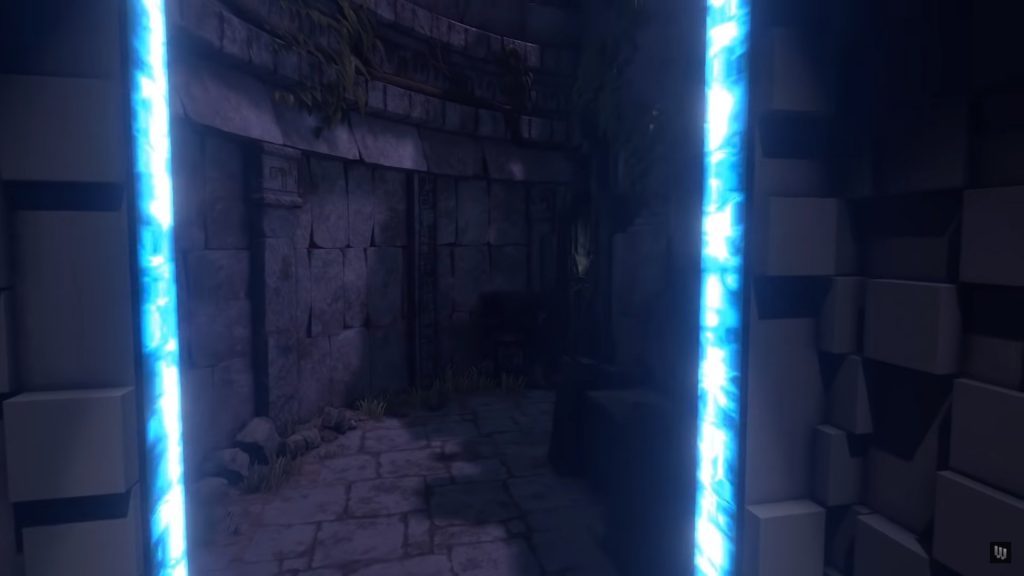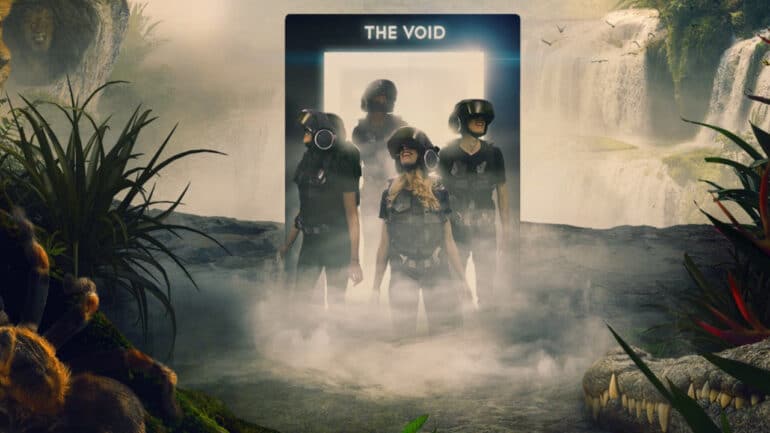Is This Real Life?
A while ago, I had the opportunity to try The Void’s unique brand of hi-tech, hyper-immersive indoor virtual reality experiences. I felt astonished at how much their current technology matched up with the high-concept future imagined in science fiction and cyberpunk stories.
With weighty haptic vests that cling to you as you move, indoor terrain that matches what you see on screen, and integration of real buttons and switches that you can reach out and touch, it truly felt like I had stepped into another world. Unlike other VR games I had played, we were truly walking through the game’s environment with our feet and interacting with puzzles using our hands, rather than with controllers and joysticks.
The game our Void location hosted was Jumanji VR: Reverse the Curse. My friend and I embodied the roles of Ruby Roundhouse and Mouse Finbar as we laughed and blundered through various jungle hijinks. I may not have a phobia of heights, but I genuinely felt knots in my stomach as I shimmied across a precariously-placed in-game cliff. The fact that I could feel the cliff represented by a real wall played with my senses until they adjusted. Then something even stranger happened.
As I returned my VR headset and haptic vest and ventured out into the real world, reality didn’t feel real. I knew in my mind that I was in the real world, but I still felt like everything I was experiencing was part of the game. The magicians at The Void managed to create an illusion so convincing, that it seems my brain wasn’t able to tell the difference.
Is This Just Fantasy?
By definition, virtual reality is an imitation of the real world. It is similar to reality in essence, yet it is not the real thing. And in its most evolved form, VR is designed to convince your senses that it is the real thing. It’s an illusion you choose to believe every time you put on that headset and haptic suit.
Virtual reality is a perfect representation of the philosophical concept of simulacra. A simulacrum is defined as an object intended to represent or imitate a person or thing. In some strains of postmodernist thought, simulacra are not just imitations of reality; they become truth in their own right. After all, if your senses can’t tell the difference, is there even a real distinction?

There is both a magic and a danger to believing our experiences in the virtual world are just as valid as our experiences in the real world. It is magical because virtual reality is the idea of “play” in its most advanced form. As children, we pretend to be knights, cowboys, pirates, or our favorite video game characters. But our self-created stories are never truly real to us because we still have to use our imaginations to turn our houses into castles and our broomsticks into horses. In virtual reality, we see our imagined worlds coming to life before our eyes.
No Escape From Reality
It is dangerous because as much as we pretend otherwise, the real world and the virtual one are not the same. We still have families, friends, and obligations that exist outside the virtual space. We cannot afford to neglect the joys and responsibilities that await us in the real world to continually live in the worlds of our imagination. I’m not saying that all gamers will be hopelessly addicted to VR, but gaming addiction is a real and present reality in our world today. And as VR becomes more and more lifelike, its threat will be ever-present.
Fiction has imagined worlds where virtual reality has become so advanced that it is indistinguishable from reality. Countless cyberpunk tales and even memorable episodes of Star Trek have imagined VR as simultaneously lifelike, enthralling, and dangerous. And these stories have addressed the topic of VR addiction in imaginative ways.
In one episode of Star Trek: The Next Generation, engineer Reginald Barclay suffers from holodeck addiction after spending too much time in the lifelike worlds of the Enterprise’s holographic simulator. Barclay evokes sympathy because he is ostracized for his awkwardness and difficulty in social situations. Thus, he uses the holodeck to escape into virtual worlds where he is a confident, dashing version of himself who saves the day and gets the girl. He is only able to turn away from his addiction when his crewmate Geordi La Forge reminds him of his value to the crew in real life.
VR, like all forms of gaming, is a gift. We are blessed to live in a reality where the technology to create amazing lifelike worlds is available. But don’t lose sight of the incredible experiences waiting for you in the real world.






